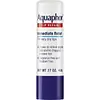What's inside
What's inside
 Key Ingredients
Key Ingredients

 Benefits
Benefits

 Concerns
Concerns

 Ingredients Side-by-side
Ingredients Side-by-side

Octyldodecanol
EmollientRicinus Communis Seed Oil
MaskingBeeswax
Emulsion StabilisingBis-Diglyceryl Polyacyladipate-2
EmollientButyrospermum Parkii Butter
Skin ConditioningHelianthus Annuus Seed Wax
Skin ConditioningHydrogenated Castor Oil
EmollientPanthenol
Skin ConditioningDimethicone
EmollientWater
Skin ConditioningTocopheryl Acetate
AntioxidantSimmondsia Chinensis Seed Oil
EmollientTocopherol
AntioxidantAscorbyl Palmitate
AntioxidantRicinus Communis Seed Oil
MaskingC18-38 Alkyl Hydroxystearoyl Stearate
EmollientOryza Sativa Bran Wax
Skin ConditioningButyrospermum Parkii Butter
Skin ConditioningPunica Granatum Sterols
Skin ConditioningStearalkonium Hectorite
Gel FormingAroma
Argania Spinosa Kernel Oil
EmollientOryza Sativa Extract
AbsorbentPropylene Carbonate
SolventTheobroma Cacao Seed Butter
EmollientHelianthus Annuus Extract
EmollientTocopherol
AntioxidantSodium Hyaluronate
HumectantRosmarinus Officinalis Leaf Extract
AntimicrobialBenzotriazolyl Dodecyl P-Cresol
UV AbsorberStevioside
MaskingTitanium Dioxide
Cosmetic ColorantHydrogenated Castor Oil
EmollientCI 45380
Cosmetic ColorantCI 19140
Cosmetic ColorantCI 15850
Cosmetic ColorantAscorbyl Palmitate
AntioxidantRicinus Communis Seed Oil, C18-38 Alkyl Hydroxystearoyl Stearate, Oryza Sativa Bran Wax, Butyrospermum Parkii Butter, Punica Granatum Sterols, Stearalkonium Hectorite, Aroma, Argania Spinosa Kernel Oil, Oryza Sativa Extract, Propylene Carbonate, Theobroma Cacao Seed Butter, Helianthus Annuus Extract, Tocopherol, Sodium Hyaluronate, Rosmarinus Officinalis Leaf Extract, Benzotriazolyl Dodecyl P-Cresol, Stevioside, Titanium Dioxide, Hydrogenated Castor Oil, CI 45380, CI 19140, CI 15850, Ascorbyl Palmitate
 Reviews
Reviews

Ingredients Explained
These ingredients are found in both products.
Ingredients higher up in an ingredient list are typically present in a larger amount.
Ascorbyl Palmitate is created by combining pure Vitamin C and palmitic acid. It is an antioxidant and helps reduce hyperpigmentation.
This ingredient is a more stable version of Vitamin C, meaning it does not disintegrate as quickly when exposed to sunlight. However, studies show it does not penetrate skin as well as pure Vitamin C.
Ascorbyl Palmitate is oil soluble.
Read more about other types of Vitamin C:
Learn more about Ascorbyl PalmitateThis ingredient is also known as shea butter. It is an effective skin hydrator and emollient.
Emollients help soothe and soften your skin. It does this by creating a protective film on your skin. This barrier helps trap moisture and keeps your skin hydrated. Emollients may be effective at treating dry or itchy skin.
Shea butter is rich in antioxidants. Antioxidants help fight free-radicals, or molecules that may harm the body. It is also full of fatty acids including stearic acid and linoleic acid. These acids help replenish the skin and keep skin moisturized.
While Shea Butter has an SPF rating of about 3-4, it is not a sunscreen replacement.
Shea butter may not be fungal acne safe. We recommend speaking with a professional if you have any concerns.
Learn more about Butyrospermum Parkii ButterHydrogenated Castor Oil is created by adding hydrogen to castor oil. This helps stabilize the castor oil and raises the melting point. At room temperature, hydrogenated castor oil is solid.
Castor Oil helps moisturize the skin. It is rich in a fatty acid called ricinoleic acid. This fatty acid helps prevent moisture loss on the skin. This helps keep your skin soft and hydrated. Ricinoleic acid also has anti-inflammatory and pain reducing properties.
As a wax-like substance, Hydrogenated Castor Oil acts as an emollient. Emollients help keep your skin stay soft and smooth by creating a barrier. This barrier helps trap moisture.
Hydrogenated Castor Oil may not be fungal-acne safe. We recommend speaking with a professional.
Learn more about Hydrogenated Castor OilRicinus Communis Seed Oil is the INCI name for castor oil.
Castor Oil helps moisturize the skin. It is rich in a fatty acid called ricinoleic acid. This fatty acid helps prevent moisture loss on the skin. This helps keep your skin soft and hydrated. Ricinoleic acid also has anti-inflammatory and pain reducing properties.
Besides hydrating the skin, castor oil is also used to hydrate hair. By keeping the hair shaft moisturized, breakage is decreased. More studies are needed to show castor oil's effective on stimulating hair growth.
Castor oil is created by cold-pressing castor seeds and then purifying the oil with heat. It was used in Ancient Egypt as fuel in lamps and to help treat eye irritation.
The term 'fragrance' is not regulated in many countries. In many cases, it is up to the brand to define this term. For instance, many brands choose to label themselves as "fragrance-free" because they are not using synthetic fragrances. However, their products may still contain ingredients such as essential oils that are considered a fragrance.
Learn more about Ricinus Communis Seed OilTocopherol (also known as Vitamin E) is a common antioxidant used to help protect the skin from free-radicals and strengthen the skin barrier. It's also fat soluble - this means our skin is great at absorbing it.
Vitamin E also helps keep your natural skin lipids healthy. Your lipid skin barrier naturally consists of lipids, ceramides, and fatty acids. Vitamin E offers extra protection for your skin’s lipid barrier, keeping your skin healthy and nourished.
Another benefit is a bit of UV protection. Vitamin E helps reduce the damage caused by UVB rays. (It should not replace your sunscreen). Combining it with Vitamin C can decrease sunburned cells and hyperpigmentation after UV exposure.
You might have noticed Vitamin E + C often paired together. This is because it is great at stabilizing Vitamin C. Using the two together helps increase the effectiveness of both ingredients.
There are often claims that Vitamin E can reduce/prevent scarring, but these claims haven't been confirmed by scientific research.
Learn more about Tocopherol